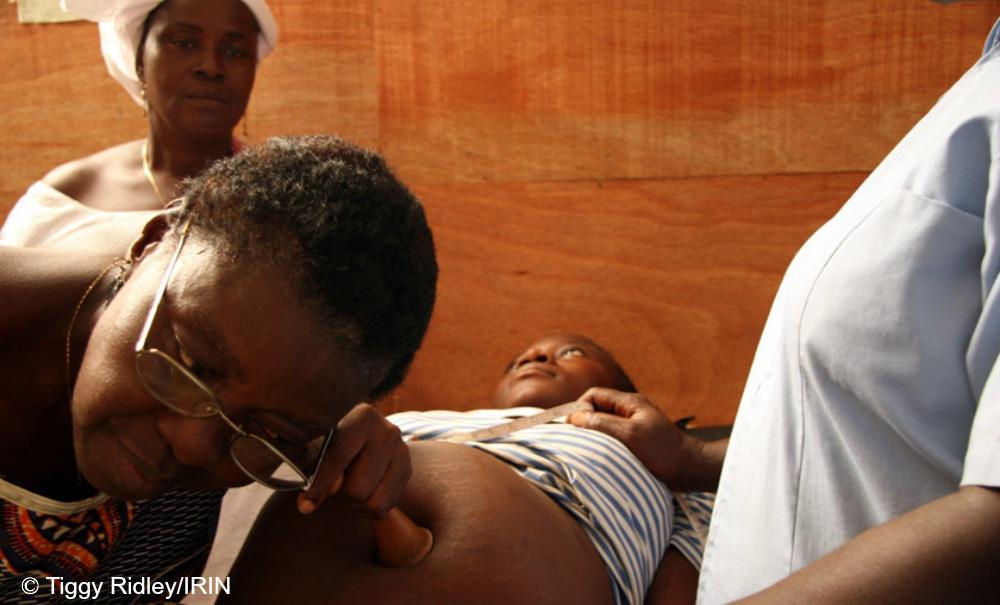Measles: A short history of a deadly disease


When measles first appears in the 10th century writings of a Persian physician, people still believe it is passed from mother to child. Children’s itchy red spots, it is believed, are a manifestation of menstrual blood their mothers were unable to shed during pregnancy.
By the 1600s, this theory was rejected. However, French obstetrician Francois Mauriceau did strongly recommend that patients not be placed in rooms with red curtains. Green would be better, he argued. It would be roughly 300 years before the virus that causes measles was discovered.
In a 1979 lecture on the history of the virus, J.H.M Axton recalled his own experience with measles as a child. A green cap figures prominently although Axton does not say why:
“My main recollection is of a darkened room in which I was nursed and later of being forced to wear a cap with green lining, especially bought for the occasion.”
Today, there remains no specific treatment for the viral infection.
Highly contagious, the measles virus lives in an infected person’s mucus in their throat or nose and transmission occurs through sneezing or coughing. Unlike other viruses that die quickly when exposed to air, like HIV, measles can live up to two hours on infected surfaces outside the body. Infection results in a runny nose, fever and cough. Within five days, patients develop an itchy rash.
Complications can include pneumonia, encephalitis or brain infection, and diarrhea. Among children who are malnourished and vitamin A deficient, one in four who contract the disease will likely die from it. In rare cases, children who survive measles will develop a fatal degenerative disease, called subacute sclerosing panencephalitis, nearly a decade after being infected.
Read more from Health-e’s investigation into vaccination in South Africa “Shots in the dark?” as part of the African Story Challenge:
- Shots in the dark? Vaccines in South Africa
- Film: Shots in the Dark? A look at vaccines in the Eastern Cape
- Missing babies, missing booster shots in the Eastern Cape
- Shots in the dark? Snapshots of Health-e investigation
- Stock-outs, low awareness stymie immunisations
- Vaccinations are everyone’s business in Shoshanguve
- What is measles?
Author
Republish this article
This work is licensed under a Creative Commons Attribution-NoDerivatives 4.0 International License.
Unless otherwise noted, you can republish our articles for free under a Creative Commons license. Here’s what you need to know:
You have to credit Health-e News. In the byline, we prefer “Author Name, Publication.” At the top of the text of your story, include a line that reads: “This story was originally published by Health-e News.” You must link the word “Health-e News” to the original URL of the story.
You must include all of the links from our story, including our newsletter sign up link.
If you use canonical metadata, please use the Health-e News URL. For more information about canonical metadata, click here.
You can’t edit our material, except to reflect relative changes in time, location and editorial style. (For example, “yesterday” can be changed to “last week”)
You have no rights to sell, license, syndicate, or otherwise represent yourself as the authorized owner of our material to any third parties. This means that you cannot actively publish or submit our work for syndication to third party platforms or apps like Apple News or Google News. Health-e News understands that publishers cannot fully control when certain third parties automatically summarise or crawl content from publishers’ own sites.
You can’t republish our material wholesale, or automatically; you need to select stories to be republished individually.
If you share republished stories on social media, we’d appreciate being tagged in your posts. You can find us on Twitter @HealthENews, Instagram @healthenews, and Facebook Health-e News Service.
You can grab HTML code for our stories easily. Click on the Creative Commons logo on our stories. You’ll find it with the other share buttons.
If you have any other questions, contact info@health-e.org.za.
Measles: A short history of a deadly disease
by lauralopez, Health-e News
March 10, 2014



